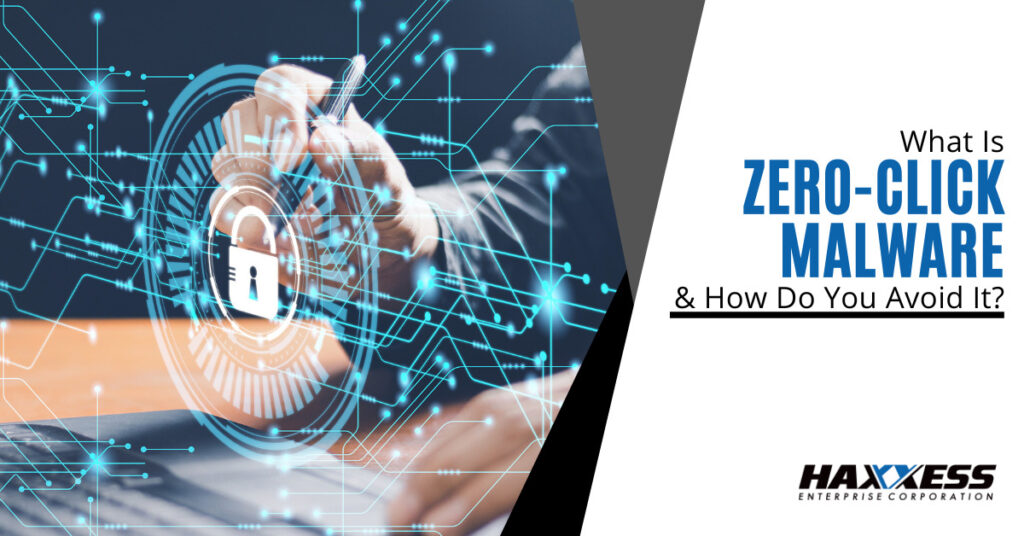
The ever-growing dependency on technology and the internet have led to an increase in cyber-attacks. Cybercriminals are constantly looking for new and innovative ways to infiltrate devices, and one of the most concerning techniques they use is “zero-click malware.” In this article, we’ll explore the ins and outs of zero-click malware, its risks, and ways to protect against it.
Zero-click malware is a type of malware that infects a device without any user interaction. As the name suggests, it requires no clicks or actions from the user, making it difficult to detect and prevent. It exploits vulnerabilities in software or hardware, allowing it to install itself automatically.
Zero-click malware targets vulnerabilities in popular software or operating systems. Cybercriminals create malicious files or links that can exploit these vulnerabilities. These files can be in the form of documents, images, or videos, and the links can be part of an email, social media post, or website.
Once the user opens the file or clicks on the link, the malware gets installed silently in the background, without the user’s knowledge. The malware can then take control of the device, access personal data, and steal sensitive information.
Zero-click malware can cause a range of problems for victims, from stealing sensitive data to taking over their device completely. Here are some of the most common risks associated with zero-click malware:
Zero-click malware can steal sensitive data from a device, including login credentials, financial information, and personal files. The data can then be sold on the dark web, resulting in identity theft or financial losses.
Some zero-click malware is designed to take over a device entirely, giving the attacker complete control over the victim’s files and settings. This can lead to the installation of additional malware, making it challenging to remove the initial infection.
Zero-click malware can also be used to install ransomware on a device. In this scenario, the attacker locks the victim’s files and demands a ransom payment to unlock them. Even if the ransom is paid, there is no guarantee that the attacker will release the files.
Although zero-click malware can be challenging to detect and prevent, there are steps you can take to reduce your risk of becoming a victim. Here are some tips:
One of the most effective ways to prevent zero-click malware is to keep your software up to date. Many zero-click malware attacks exploit vulnerabilities in outdated software, so it’s essential to install updates promptly.
Anti-malware software can help detect and prevent zero-click malware. Make sure you choose a reputable software provider and keep your anti-malware software up to date.
Zero-click malware is often distributed through phishing emails. Be cautious of emails from unknown senders or emails that ask you to download attachments or click on links. Always verify the authenticity of the email by checking the sender’s email address and avoiding clicking on any suspicious links or downloads.
Cybercriminals often use legitimate websites as a way to distribute zero-click malware. Be wary of websites that seem suspicious or ask you to download files. Use a reputable browser with an ad blocker to reduce the risk of encountering malicious ads.
Two-factor authentication can help prevent zero-click malware attacks by adding an extra layer of security to your accounts. If an attacker gains access to your password, they still need a second factor, such as a fingerprint or one-time code, to access your account.
Strong passwords can also help prevent zero-click malware attacks. Avoid using the same password for multiple accounts and use a mix of uppercase and lowercase letters, numbers, and special characters.
Enabling firewall protection can help prevent unauthorized access to your device. A firewall is a security system that monitors incoming and outgoing network traffic and blocks any malicious traffic.
Macros are automated tasks that can be programmed into documents or spreadsheets. Cybercriminals often use macros to distribute zero-click malware. To reduce your risk of infection, disable macros in your document software.
Zero-click malware is the newest cyber attack trend, but you don’t have to become a victim. To stay ahead of cyber criminals, it’s essential to take steps to protect your devices and data from these types of attacks.
By keeping your software up to date, using anti-malware software, being cautious of suspicious emails and websites, using two-factor authentication, using strong passwords, enabling firewall protection, and disabling macros, you can significantly reduce your risk of becoming a victim of zero-click malware.
If you suspect that your device has been infected with zero-click malware, seek help from a cybersecurity professional immediately.
To get help protecting your devices and data from zero-click malware and other cybersecurity threats, contact Haxxess today. Our team of cybersecurity professionals can help you develop a comprehensive strategy to keep your business and personal data safe.